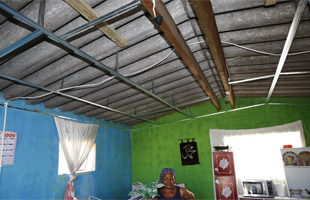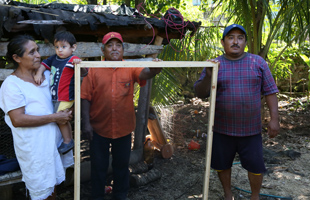New Zealand - Housing, insulation and health study

In 2001-2002, a study was carried out on 1350 households in New Zealand to assess the health effects of installing insulation in houses, as well as its energy and environmental co-benefits. Interventions included ceiling insulation, window and door modification, and inclusion of a moisture barrier.
The results of the study demonstrated that the interventions led to reduced chances of wheezing, lower hospital admissions, fewer general practitioner visits and less days missed from school and work. In combination with these health benefits, typical households benefited from net energy savings of 13%. As this example demonstrated, retrofitting dwellings with insulation and thermal envelope improvements can not only provided health benefits, but also energy and cost savings.
South Africa - Kuyasa housing energy upgrade project

The Kuyasa project is one of a few housing initiatives globally that has qualified for financing under the UNFCCC Clean Development Mechanism for climate finance. The project aims to improve thermal performance and reduce climate emissions of both existing and future housing units in Kuyasa, a low-income neighbourhood in Cape Town, South Africa. Retrofits include solar water heaters, ceiling insulation, and energy-efficient compact fluorescent light bulbs.
The project has had health, economic and social impacts. Upgrading measures have reduced the rate of household dampness, thereby decreasing disease risk. Access to hot water has been linked to improved hygiene that can reduce diarrhoeal diseases. Reduced indoor air pollution has improved air quality reducing the risk of lung-related illness. Though residents are billed each month for the costs of improvements, this is offset by energy savings on reduced monthly heating bills. Labour and technology for retrofits has been sourced locally, allowing revenue to remain in the country.
Low-carbon housing and vector-borne disease control

Housing improvements have been used as preventive strategies for vector-borne diseases such as Chagas disease, dengue fever and leishmaniasis.
In Latin America, infestation by triatomine vectors of Chagas disease can be mitigated through better plastering of walls, concrete floors, tiled roofs, and improved hygiene and sanitation.
Mosquito vectors of dengue use water storage containers around households as larval breeding habitats. Environmentally friendly interventions for vector control include covering water containers, reduced water storage and accumulation, and waste cleanup.
In South Asia, sand fly vectors of leishmaniasis have previously been controlled by indoor spraying with harmful chemicals such as DDT. Lime-plastering of walls is an example of a low-carbon housing measure which can promote vector control, in addition to the use of insecticide-treated nets.
